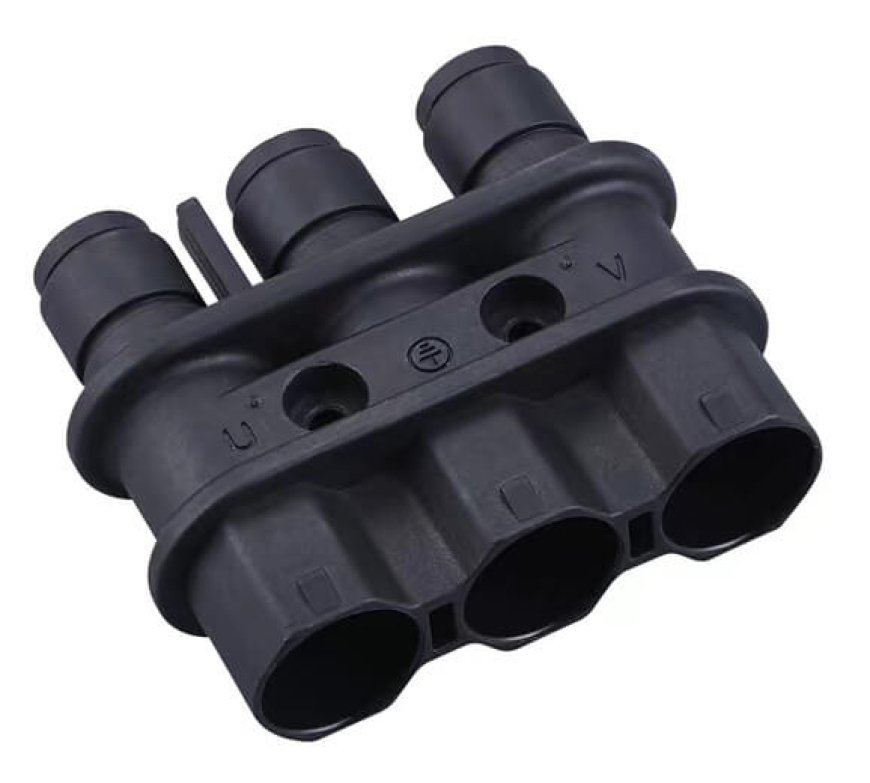Mastering Injection Molding: A Comprehensive Guide
Injection molding is a cornerstone of modern manufacturing, allowing for the mass production of complex plastic parts with precision and efficiency.

Mastering Injection Molding: A Comprehensive Guide
Injection molding is a cornerstone of modern manufacturing, allowing for the mass production of complex plastic parts with precision and efficiency. As a seasoned professional in this field, I've seen firsthand how mastering the intricacies of injection molding can revolutionize production processes and lead to superior product quality. In this comprehensive guide, we'll dive deep into the world of injection molding, covering everything from basic principles to advanced techniques.
The Fundamentals of Injection Molding
At its core, injection molding is a manufacturing process that involves injecting molten plastic material into a mold cavity, where it cools and solidifies into the desired shape. This seemingly simple concept belies the complex interplay of factors that must be carefully controlled to achieve optimal results.
The process begins with plastic pellets being fed into a heated barrel, where they melt and are then forced into the mold under high pressure. As the material cools, it takes on the shape of the mold cavity. Once solidified, the part is ejected, and the cycle begins anew.
Key Components of an Injection Molding Machine
Understanding the various parts of an injection molding machine is crucial for anyone looking to master this process. Here's a breakdown of the main components:
- Hopper: Stores and feeds plastic pellets into the machine. It's the starting point of the molding process, ensuring a consistent supply of raw material.
- Barrel: Houses the screw and heats the plastic material. This component plays a vital role in melting and homogenizing the plastic.
- Screw: Moves and mixes the melted plastic. Its design is critical for ensuring proper material distribution and consistency.
- Nozzle: Connects the barrel to the mold and controls material flow. It's the final point before the plastic enters the mold cavity.
- Mold: Shapes the molten plastic into the final product. The mold design is perhaps the most crucial factor in determining the quality and characteristics of the finished part.
- Clamping unit: Holds the mold halves together during injection and cooling. It must withstand enormous pressures to ensure the mold doesn't open prematurely.
Each of these components plays a vital role in the overall process, and optimizing their performance is key to producing high-quality parts consistently.
Designing for Injection Molding Success
One of the most critical aspects of injection molding is proper part design. A well-designed part not only functions as intended but also lends itself to efficient and cost-effective production. Here are some key considerations when designing for injection molding:
Wall Thickness
Maintaining uniform wall thickness throughout the part is crucial for preventing issues like warping and sink marks. Ideally, wall thickness should be between 2-4mm for most applications.
Draft Angles
Incorporating appropriate draft angles into your design facilitates easy part removal from the mold. A general rule of thumb is to use a minimum draft angle of 1-2 degrees for external surfaces and 0.5-1 degree for internal surfaces.
Ribs and Gussets
These features can add strength to your part without significantly increasing its overall thickness. However, it's important to design them carefully to avoid sink marks and other defects.
Gate Location
The position of the gate (where molten plastic enters the mold cavity) can have a significant impact on part quality and appearance. Careful consideration should be given to gate location during the design phase.
Material Selection: Choosing the Right Plastic
Selecting the appropriate material for your injection molded part is crucial for ensuring it meets performance requirements while also being suitable for the molding process. Some popular materials include:
- ABS (Acrylonitrile Butadiene Styrene): Known for its toughness and impact resistance. It's widely used in automotive and consumer electronics applications.
- Polypropylene: Offers excellent chemical resistance and low density. This versatile material is found in everything from food containers to automotive components.
- Polyethylene: Comes in various grades with different properties. It's one of the most commonly used plastics due to its low cost and good processability.
- Polycarbonate: Provides high impact strength and optical clarity. It's often used in safety equipment and automotive lighting.
- Nylon: Offers good wear resistance and strength. This material is popular in automotive and industrial applications where durability is key.
Each material has its own unique set of properties and processing requirements, so it's essential to work closely with material suppliers and mold designers to choose the best option for your specific application.
Optimizing Injection Molding Parameters
Achieving consistent, high-quality results in injection molding requires careful control of various process parameters. Here are some key factors to consider:
- - Melt Temperature: The temperature of the molten plastic as it enters the mold cavity can significantly impact part quality. Too low, and you risk incomplete filling; too high, and you may encounter issues with degradation or flash.
- - Injection Pressure: Proper injection pressure ensures complete filling of the mold cavity and helps prevent defects like short shots or sink marks. It's a delicate balance that often requires fine-tuning.
- - Holding Pressure: After initial injection, holding pressure is applied to compensate for material shrinkage as the part cools. This helps maintain dimensional accuracy and surface finish, particularly in thicker sections of the part.
- - Cooling Time: Adequate cooling time is crucial for ensuring the part is sufficiently solidified before ejection. Insufficient cooling can lead to warpage or other dimensional issues, while excessive cooling time can unnecessarily extend cycle times.
- - Screw Speed: The rotational speed of the screw affects material mixing and melting. Proper control of screw speed is essential for maintaining consistent melt quality and avoiding issues like material degradation or inconsistent shot sizes.
Troubleshooting Common Injection Molding Issues
Even with careful design and process control, issues can still arise in injection molding. Here's a table outlining some common problems and their potential solutions:
| Problem | Possible Causes | Solutions |
|---|---|---|
| Short shots | Insufficient material, low injection pressure, blocked gates | Increase shot size, adjust injection pressure, clean or modify gates |
| Sink marks | Thick sections, insufficient holding pressure, high melt temperature | Redesign part, increase holding pressure, lower melt temperature |
| Warpage | Uneven cooling, excessive molded-in stress | Optimize cooling system, adjust process parameters, modify part design |
| Flash | Excessive injection pressure, worn mold, insufficient clamping force | Reduce injection pressure, repair or replace mold, increase clamping force |
| Burning | Trapped air, excessive melt temperature, slow injection speed | Add vents, lower melt temperature, increase injection speed |
Advanced Injection Molding Techniques
As technology continues to advance, new techniques are being developed to push the boundaries of what's possible with injection molding. Here are a few cutting-edge approaches:
- Gas-Assisted Injection Molding: This technique involves injecting gas (typically nitrogen) into the mold cavity along with the plastic material. The gas creates hollow sections within the part, reducing weight and material usage while maintaining structural integrity. It's particularly useful for large parts or those with thick sections.
- Multi-Material Injection Molding: Also known as two-shot or over-molding, this process allows for the creation of parts with multiple materials or colors in a single molding cycle. It's particularly useful for producing complex parts with integrated soft-touch components or seals, eliminating the need for secondary assembly operations.
- Micromolding: As products continue to shrink in size, micromolding techniques have been developed to produce incredibly small and precise plastic parts, often with features measured in microns. This technology is crucial for industries like medical devices and electronics, where miniaturization is a key trend.
Sustainable Practices in Injection Molding
In today's environmentally conscious world, implementing sustainable practices in injection molding is not just good for the planet – it's good for business. Here are some ways to make your injection molding operations more sustainable:
- + Use recycled or bio-based materials: Incorporating these materials can significantly reduce your carbon footprint and appeal to environmentally conscious customers.
- + Implement closed-loop material recycling systems: This approach minimizes waste by reprocessing scrap material back into the production cycle.
- + Optimize part design to reduce material usage: Techniques like thin-walling and strategic use of ribs can maintain part strength while using less material.
- + Invest in energy-efficient machinery: Modern injection molding machines often come with features designed to reduce energy consumption without sacrificing performance. + Utilize waste heat recovery systems: Capturing and repurposing heat generated during the molding process can significantly reduce overall energy usage in your facility.
By adopting these practices, you can reduce your environmental impact while potentially lowering production costs.
The Future of Injection Molding
As we look to the future, several trends are shaping the injection molding industry:
- * Industry 4.0 Integration: The integration of smart technologies and data analytics is revolutionizing injection molding processes, allowing for real-time monitoring and adjustment of production parameters. This leads to improved efficiency, reduced waste, and higher quality outputs.
- * Additive Manufacturing Synergies: While often seen as competing technologies, injection molding and 3D printing are increasingly being used in complementary ways, particularly in prototyping and low-volume production. 3D printing can be used to rapidly produce mold inserts or prototypes before full-scale injection molding begins.
- * Continued Material Innovation: The development of new and improved plastic materials continues to open up new possibilities for injection molded parts, including enhanced performance characteristics and improved sustainability. This includes advancements in biodegradable plastics and materials with unique properties like conductivity or enhanced thermal resistance.
Conclusion: Mastering the Art and Science of Injection Molding
Injection molding is a complex process that requires a deep understanding of material properties, machine dynamics, and design principles. By mastering these elements and staying abreast of the latest developments in the field, you can consistently produce high-quality parts while optimizing efficiency and sustainability.
Whether you're looking to explore injection molding options in China or searching for local injection molding services, the principles outlined in this guide will serve you well. Remember, successful injection molding is as much an art as it is a science – it takes practice, patience, and a commitment to continuous learning to truly excel in this field.
What's Your Reaction?

















